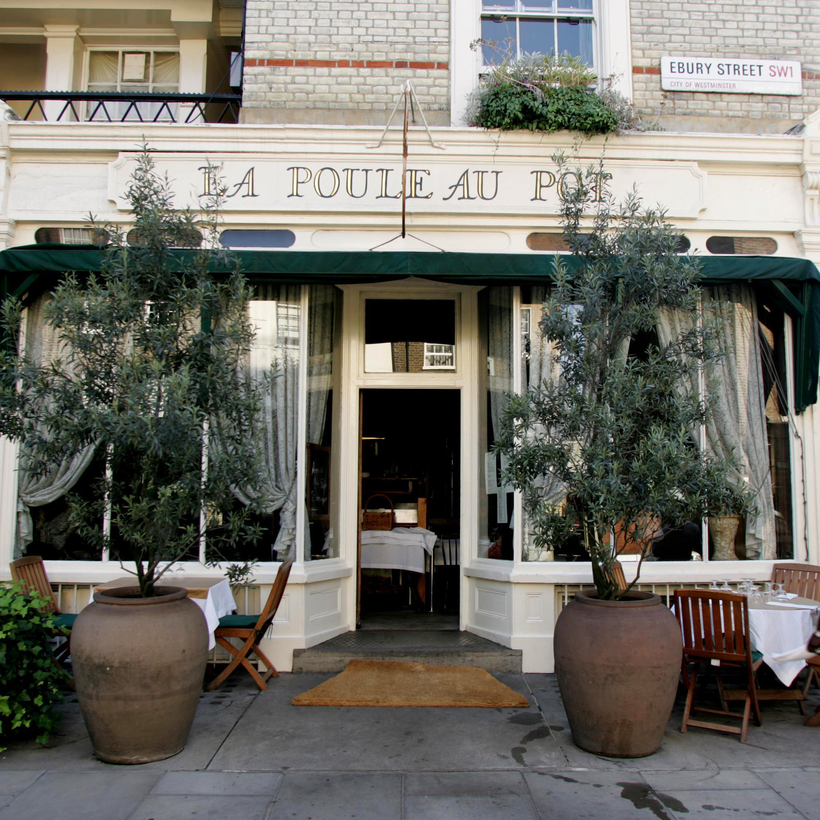La Poule au Pot opened in 1964, on a thriving corner of Belgravia in West London. A small room with wide, street-facing windows, mismatched chairs, and dried lipstick-pink florals slung from above, it was originally owned by the actor Charles Brody. At that time, the restaurant felt more like an extension of Brody’s living room than it did a French bistro. According to lore, back in the 70s, the house wine came in glorious magnums, and waiters would draw a line on the bottle to mark the volume guests drank, then charge accordingly.
In the 60 years since, that unusual alchemy has largely stayed the same. Impervious to trends, lunch and dinner reservations still consistently start with a waiting list. Arrive early for dinner and you’re likely to find the staff muttering in French over their pre-service evening meal.

If a neighborhood is an emblem of change, where businesses come and go and independent storefronts get swapped out for chains, inside the four walls at La Poule au Pot, it’s a time capsule. A fossilized French hideaway that has come to define the surrounding area.

The restaurant is often cited as among London’s most romantic, and the 45 off-kilter seats have seen no shortage of first dates, marriage proposals, and anniversary celebrations. Beyond its idiosyncratic rom-com appeal and favorable low lighting—it’s impossible not to look good against the flicker of a single, well-placed candle—the clientele defy both age and type. From the faded velvet booths, Instagram-happy tourists sidle up against paunchy men wearing trousers the same hue as their salmon terrine. The scent of garlic and herbs wafts out onto the cobbled square.
The menus are reassuringly written only in French, and the homey, low-key cooking is treated as an art form. A ubiquitous vegetable such as asparagus or white onion becomes unforgettable once given a Gallic lilt inside an airy quiche or bowl of soup. And no one is coy about butter, salt, or goose fat. Portions are generous, and plates—mismatched, Parisian-flea-market-style—arrive from the kitchen in swarms. It’s the antidote to big-ego chefs’ tweezing microgreens onto avant-garde dishes.

A quick scan of the surrounding tables reads like the index of a Julia Child cookbook—dense blocks of paté rest against trays of moules frites and sautéed potatoes. And then there’s the poule au pot itself, a one-stop shop of chicken thighs, potatoes, zucchini, and carrots served in a deep dish of Provençal earthenware.
La Poule au Pot is a delightful reminder that sometimes the best change is none at all.
Bridget Arsenault is a Writer at Large at Air Mail


